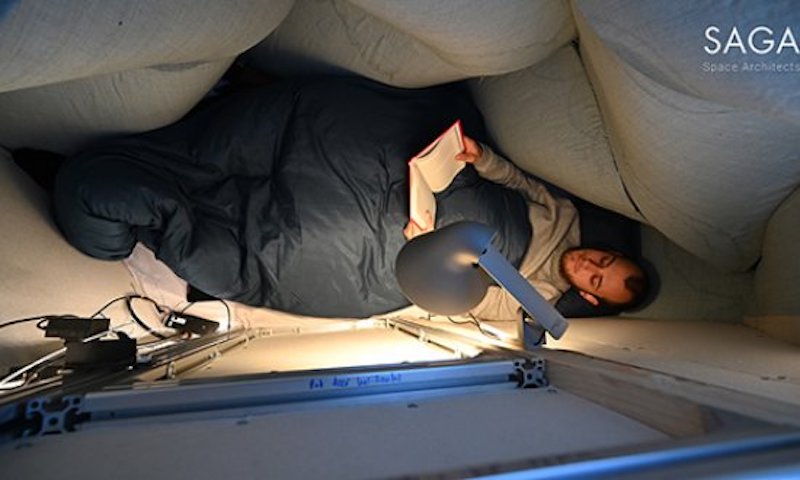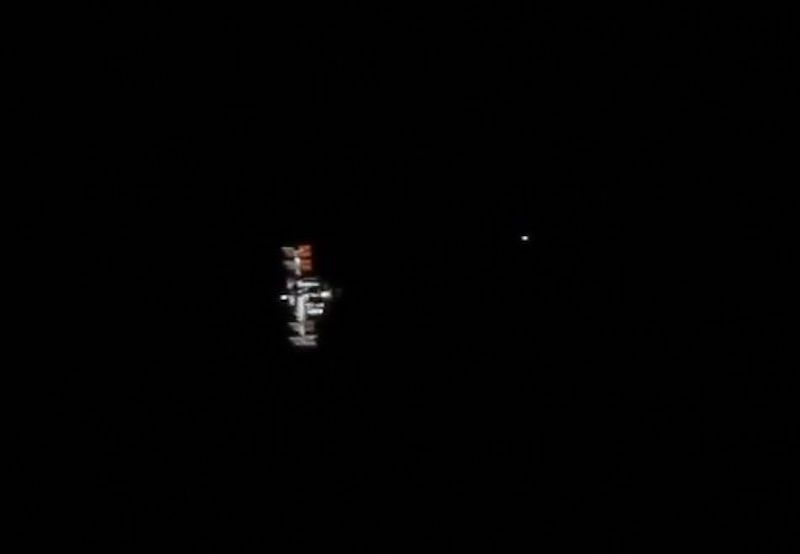
In the not-too-distant future, NASA wants to have human habitats on the moon. Though perhaps not as fancy as those depicted in movies and books, they’d be long-term habitats where astronauts and scientists could live and work. Technologically, it should be possible. But what about the effects on our human psyches: our souls, minds and spirits? On April 5, 2022, researchers announced results of a new study related to human isolation in space.
Two men – Sebastian Aristotelis and Karl-Johan Sørensen, both space architects (working on “making space livable”) – lived in an airtight, portable and foldable pod that they themselves designed. They remained in the pod for 61 days beginning in September 2020. To simulate the lunar environment, the pod was placed in northern Greenland, in the Arctic region.
The pod was designed to be environmentally friendly, with no waste left behind. And, the team said it could withstand local threats, even from a polar bear who visited during the course of the study.
The purpose was to investigate and simulate the psychological impact of social isolation in harsh environments like the moon.
One result of the study: A series of “well-being sessions” measured as a positive for Aristotelis and Sørensen during their 61 days in extreme isolation.
Researchers at the University of Surrey and the University of Milano-Bicocca partnered with the pair, whose company is called SAGA Space Architects. The project was part of SAGA’s LUNARK project. The researchers published the peer-reviewed results of their simulation in the upcoming June 2022 issue of Acta Astronautica. There is also a free version of their paper available on ResearchGate.




Psychological impacts of isolation
The project aimed to study the psychological effects of isolation in several ways. This included measuring the occupants’ perceptions of time, their positive and negative emotions, levels of satisfaction of basic psychological needs, behavioral intentions and coping strategies. As part of this process, Aristotelis and Sørensen kept personal diaries and each day completed a 20-minute questionnaire.
In addition, they also had no internet access, but were allowed to use a satellite phone to send daily messages (up to 160 characters maximum) to the research headquarters in Copenhagen, Denmark.
Konstantin Chterev, a co-author of the study, stated that:
Research to address the technical challenges of human missions into space is growing at a rapid rate. Therefore, it is critical that we explore the social-psychological aspects of individuals’ experiences of confinement within these habitats. We know that social isolation is among one of the main risk factors in these environments, but we still have a lot to learn.

Results of moon habitat experiment
So, was the experiment successful? It seems it was, and provided some valuable insight into how future human lunar dwellers might cope with living in such an extreme environment.
For both Aristotelis and Sørensen, unsurprisingly, their desire for social contact increased over time. However, and significantly, negative feelings of alienation, depression, helplessness and unworthiness did not.
How was that possible? As it turned out, talking about personal matters and engaging in leisure time helped to alleviate those negative feelings. It did, however, also increase the desire for social contact. As described in the paper:
First, our results showed that, for either space architect, desire for social contact increased over time, whereas feelings of resignation did not. Moreover, the protective role of specific daily activities emerged. Talking about personal matters and leisure time were associated with a decrease in resignation, whereas talking about personal topics and physical exercising increased the desire for social contact.
Furthermore, engaging in leisure activities increased the perceived speed of time. As the saying goes, “time goes by faster when you’re having fun.”

Future space travel
Long-term human space exploration will require being able to cope with long periods of isolation, not just physically, but mentally. With this in mind, the results from LUNARK are encouraging for the future of human space exploration. As Chterev surmised:
Space travel will likely become more frequent in the next few decades, due to the opening of the private market, NASA’s plans to send people to the moon this decade, and government agencies in China and India joining the space travel race. With more organizations involved in sending people to space, we need more studies to focus on the mental health impacts involved in long missions in extreme and confined environments. Work like this will be able to inform future training and the planning of schedules in extreme environment expeditions and lunar missions, in which it is crucial to balance mission-critical tasks and physical wellbeing with protecting psychological wellbeing and mitigating the negative effects of long-term isolation.
Bottom line: A simulation of a moon habitat in the Arctic shows how future lunar dwellers can cope with the psychological effects of extreme isolation. The research is part of the LUNARK project.











